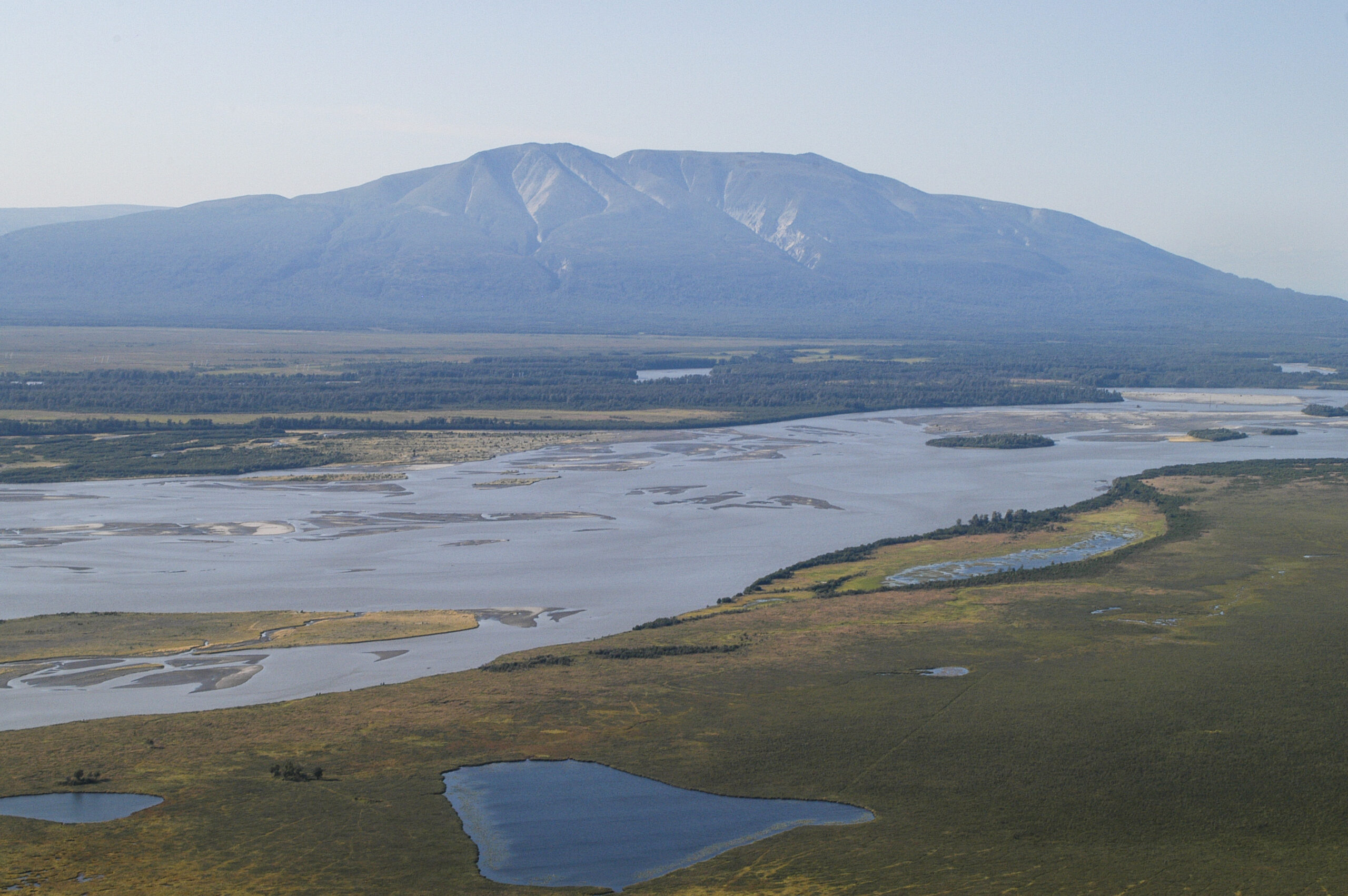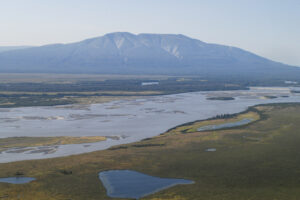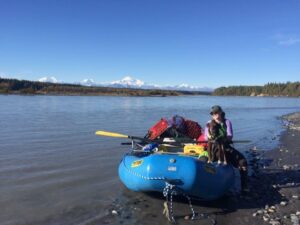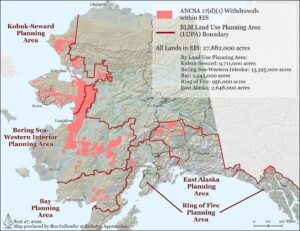
What you can do for the West Su—and other acts of love
By Dawnell Smith
To the west of the Susitna River lies a huge swath of land that nourishes salmon runs and biodiversity, animal habitat and migrations, and the cultures, livelihoods, and ways of life of Alaskans. An industrial road could change all that.

The Susitna Flats State Game Refuge and mouth of the Susitna River.
The 100-mile West Su Industrial Access Road would benefit an Australian mining company on the backs of taxpayers and the health of the region. It would also open the region to other hardrock mining, coal mining, and gas extraction projects and even facilitate the construction of a proposed coal-fired power plant. The Alaska Department of Transportation has begun the permitting process for construction of the first 22 miles of this road, claiming to focus on public recreation and access when really pushing a much bigger destructive industrial corridor.
The full project propped up by the Alaska Industrial Development and Export Authority, or AIDEA, would have devastating impacts on salmon, wildlife, local lodges and businesses, and the lands and waters vital to West Su communities.
Last year, the State carved off a portion of the road for the Department of Transportation to take on instead of AIDEA — most likely with an eye toward expediting the construction of the first part of the project using federal funds under the guise of it being a recreation road rather than an industrial road. The federal funds that State seeks to put into the West Su Industrial Access proposal could be directed toward more urgent infrastructure needs and long-overdue repairs for existing roads, rather than being thrown at this massive and destructive industrial project.
Right now, you can do your part to protect the West Su from this industrial road and subsequent mining by speaking your mind. The deadline for comments is Aug. 23.
State takes step toward a fiscal, environmental monstrosity
Make no mistake, the effort to build the first fifth of the West Su industrial road — including a huge bridge across the Susitna River — is a thinly veiled attempt to get a portion of an industrial corridor approved and paid for with federal money intended for “recreation access.”
The agency by law is currently seeking input about the scope of issues or concerns the agency should consider when deciding whether to authorize this first 22 miles of the West Su industrial corridor. There are a few key points you can make.
First, tell the agency it must look at the full set of impacts of the entire project when doing its assessment of the current proposal — not just the first 22 miles. It’s no secret that the state’s seeing this proposal as the first stage of the larger project, and it’s essential that it thoroughly look at the impacts of the that larger project and all it entails, including mining waste and pollution.
Second, tell the agency that it must do a full environmental impact statement, not shortcut the environmental review by doing an environmental assessment, as it proposes to do here; the more superficial environmental assessment is inappropriate for a project of this scope and size, while a full environmental impact statement involves a deeper analysis of impacts along with more public involvement. More is better when it comes to transparency and public participation.
A state of irresponsibility
Even as the state attempts a go-around by using federal dollars earmarked for public access to build part of this industrial road, Alaska taxpayers would eventually have to pony up $450 million (or more) on another AIDEA money sink for the full West Su project. The agency is already mired in controversy for its lack of accountability and transparency and is steeped in a legacy of fiscal failure.

Many Alaskans who live near, go to, and rely on the Susitna River area do so precisely because of its abundance and lack of industrialization.
Yet it wants to push this project onto a thriving region of abundance, no matter who gets hurt. The West Su road would devastate hunting and fishing grounds, threaten salmon fisheries, and degrade recreational opportunities for locals and visitors alike.
It would stretch along the Iditarod Trail and forever alter the nature of the Iditarod Sled Dog Race. It would cross over 150 streams and require nearly a dozen bridges and include land destruction that will do ongoing harm to fish and animal habitat.
As Wasilla resident Lee McKnight said in an opinion piece in the Anchorage Daily News, the project “would take at least a half-billion dollars of Alaskan’s money away from road repair, infrastructure, education, and other priorities we actually need — all while destroying much of the reason to even be in the West Susitna area.”
The deadline to comment is August 23. You can submit a comment directly to the Department of Transportation or via the Defend the West Su website.

One more act of love for lands across the state
Right now, you can show more love for Alaska by speaking up for D1 lands across the state. The Department of the Interior took a big step toward upholding protections for 28 million acres of lands important to communities, cultures, and ways of life. Now Interior needs to finish the job.
These public lands are particularly vital to Alaska Native communities. Four Tribal leaders noted in an opinion piece last month that during 19 public meetings, “community support, across Alaska and online, for D-1 protections was nearly unanimous. Tribes spoke to D-1 lands’ critical connection to the health and well-being of our communities and how they protect cultural resources, provide a home for our fish and wildlife and support subsistence opportunities. These lands and waters provide for us as they have for countless generations.”
Join the effort to support Alaskans and future generations by signing this Wild Salmon Center petition asking Interior to finalize protections.


